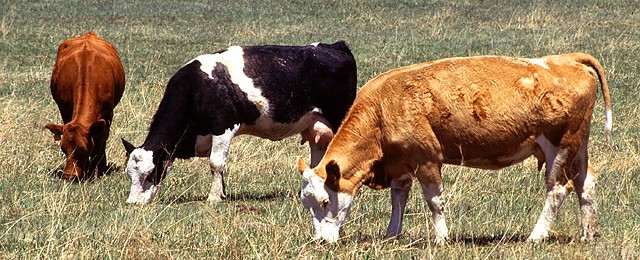Livestock
-

Here’s an odd and interesting story about how scientists in Mussolini’s Italy used the protein casein in milk to make an artificial wool-like fiber that could be turned into clothing. This new milk fiber was dubbed lanital (a compounding of lana, meaning wool, and ital, from Italia). You can read about it and watch a…
-

While dry weather is not a problem for most parts of the Southeast this year, in the past it has caused problems for livestock producers. This year the problems are worst in the upper Plains where drought has expanded rapidly. Drovers Newsletter has a good reminder of how blue green algae, nitrates and prussic acid…
-

Food & Wine magazine posted an interesting story today about some recent research by Australian scientists which they claim shows that feeding cattle a diet with seaweed in it (as little as 2% is the claim) the methane output from the cows is significantly reduced. Since Ireland is an island surrounded by the sea, Irish…
-

Newser reported this week that Los Angeles broke a 131-year temperature record on Saturday with a temperature of 96 F in downtown LA, surpassing the old record of 95 F set back in 1886. The high temperatures have caused problems for children, the elderly and other vulnerable populations and increased the incidence of heat-related illnesses…
-

Growing Georgia posted a story this week on the impacts of the wet weather we have been having in the Southeast on forage conditions. The damp conditions have fostered the growth of mold in some forage and farmers need to check it carefully before feeding it to their livestock, since the presence of mold can…
-

Food and Wine magazine had an interesting article this week on efforts by University of Florida scientists to produce a cow that is more resistant to hot conditions by crossing Angus with Brahman breeds. According to the article ,”the new “heat-resistant” cow would be able to better handle heat stress, they say, and because of…
-

One of the consequences of the rainy conditions in the central US this year has been exceptional runoff of fertilizer and other agricultural chemicals as well as animal waste, most of which make their way down the Mississippi River into the Gulf of Mexico. These chemicals help lead to the development of a “dead zone”…